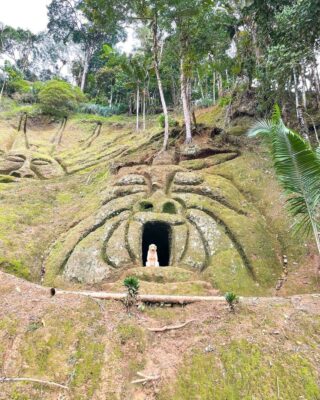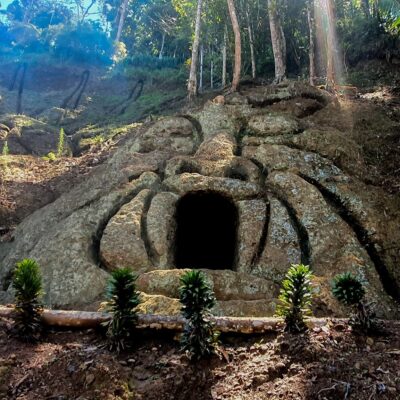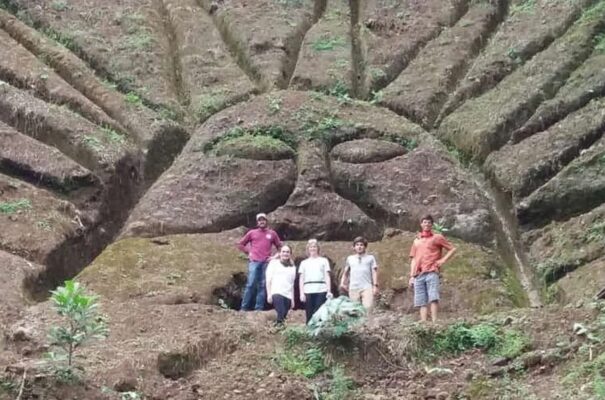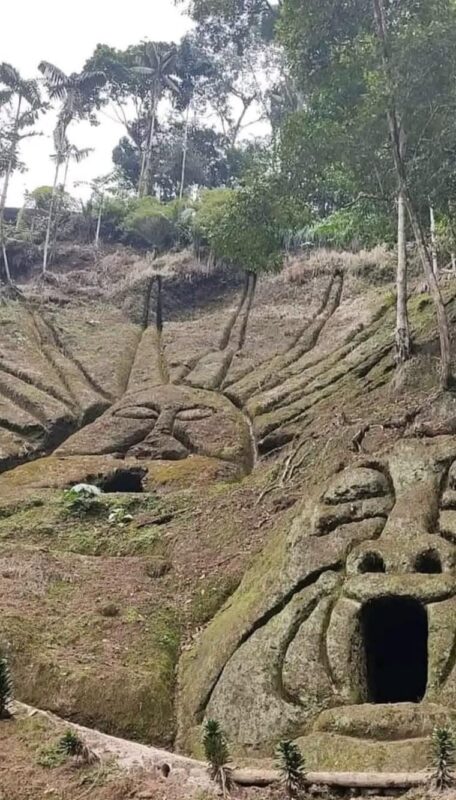Recent archaeological discoveries in the Ecuadorian Amazon have revealed a network of lost cities, challenging long-held beliefs about the complexity of pre-Columbian societies in the region. Using cutting-edge LIDAR (Light Detection and Ranging) technology, researchers have uncovered evidence of a thriving civilization that existed over 2,000 years ago, housing at least 10,000 people. This groundbreaking find offers a new perspective on the history of the Amazon and its inhabitants. Follow archeology.dulichvn.net to discover many hidden mysteries that have yet to be discovered.

Unveiling the Lost Urban Landscape Ecuadorian Amazon
The use of LIDAR technology has been instrumental in this discovery. By penetrating the dense rainforest canopy, LIDAR has revealed the hidden infrastructure of these ancient settlements.
Mapping the City’s Infrastructure
The LIDAR scans exposed a complex network of interconnected settlements, revealing an intricate urban landscape. This includes evidence of:
- Extensive Road Networks: Wide roads, some reaching up to 10 meters (33 feet) in width and stretching for up to 20 kilometers (12 miles), connected various settlements, indicating a well-organized society with advanced planning and engineering capabilities.
- Agricultural Fields: The presence of surrounding agricultural fields suggests a sophisticated understanding of agriculture and resource management, enabling the sustenance of a large population.
- Intricate Drainage Systems: Evidence of complex drainage systems points to advanced urban planning, crucial for managing water flow in the rainforest environment and preventing flooding.
Locating the Upano People
The discovered cities are believed to have been inhabited by the Upano people between 500 BC and 600 AD. This timeframe places them within a significant period of pre-Columbian history.
- A Thriving Civilization: The sheer size and organization of these settlements indicate a thriving and well-established civilization with a complex social structure.
- Pre-Columbian Era: This discovery sheds light on the pre-Columbian era in the Amazon, demonstrating the existence of advanced societies long before European contact.
- Challenging Existing Narratives: The Upano people’s existence and sophisticated urban development challenge previously held assumptions about the limited complexity of Amazonian cultures.
A “Lost Valley of Cities”
Researchers have described the interconnected network of settlements as a “lost valley of cities.” This description highlights the significance of the discovery.
- Interconnected Settlements: The numerous interconnected settlements suggest a unified cultural and political entity, rather than isolated communities.
- A Significant Urban Center: The scale of the urban development positions this area as a significant urban center in pre-Columbian South America.
- Reshaping Historical Understanding: This discovery reshapes our understanding of the demographic and cultural landscape of the Amazon in ancient times.

See more: Exploring the Majestic Ruins of Castle Sinclair Girnigoe, Scotland
Implications for Understanding Ancient Amazonia
The discovery of these lost cities has profound implications for our understanding of ancient Amazonia. It challenges previous assumptions and opens new avenues of research.
Challenging Previous Assumptions
The scale and complexity of these cities challenge long-held assumptions about the limited development of pre-Columbian Amazonian societies.
- Beyond Hunter-Gatherers: This discovery demonstrates that Amazonian societies were not simply small-scale hunter-gatherer groups, but capable of large-scale urban development.
- Advanced Social Structures: The complex infrastructure and organization of these cities suggest advanced social structures, including specialized labor and hierarchical governance.
- Reframing Amazonian History: This discovery necessitates a reframing of Amazonian history, recognizing the region as a cradle of complex civilizations.
Reshaping Our Understanding of Pre-Columbian Civilizations
This discovery significantly reshapes our understanding of pre-Columbian civilizations in South America.
- Advanced Urban Planning: The presence of extensive road networks, agricultural fields, and drainage systems demonstrates advanced urban planning and engineering skills.
- Dense Populations: The estimated population of at least 10,000 people indicates a densely populated region with a well-developed social and economic system.
- A New Perspective on Amazonian History: This discovery offers a new perspective on Amazonian history, highlighting the region’s crucial role in the development of pre-Columbian civilizations.
A New Chapter in Archaeological Research
This discovery marks a new chapter in archaeological research in the Amazon. It highlights the potential of LIDAR technology and opens up exciting new research avenues.
- The Power of LIDAR: This discovery demonstrates the power of LIDAR technology in uncovering hidden archaeological sites in dense environments like the Amazon rainforest.
- Future Research Potential: The discovery opens up exciting new research avenues, including further investigation of the Upano culture, their social organization, and their interactions with other neighboring societies.
- Protecting Cultural Heritage: This discovery emphasizes the importance of protecting and preserving this invaluable cultural heritage for future generations.

This remarkable discovery offers a captivating glimpse into the past, revealing the existence of a sophisticated and vibrant civilization in the heart of the Amazon. It compels us to reconsider our understanding of pre-Columbian history and highlights the importance of continued exploration and research in this fascinating region.


CÁC TIN KHÁC
Mary Walton: The Forgotten Inventor Who Helped Clean Up America’s Cities
Tomb of Queen Nefertari in the Valley of the Queens, Egypt
Discover the Hypostyle Hall of the Temple of Hathor at Dendera
Venus de Losange: Unveiling the Mystery of a 20,000-Year-Old Paleolithic Icon